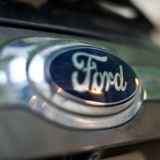Montana train derailment causes consumer product spill
In a stroke of luck, a train derailment in Montana on Friday afternoon resulted in no injuries, despite the derailment of 11 train cars, according to officials.
The incident occurred on the BNSF Railway tracks at approximately 5:39 p.m. local time, near the Milk River, east of Havre. BNSF spokesperson Lena Kent confirmed that 11 cars derailed during the incident. As of now, the cause of the derailment remains under investigation.
Following the accident, efforts to clear the tracks and clean up the area commenced immediately. Fortunately, the line was reopened for service on Saturday, ensuring minimal disruption to rail operations.
Remarkably, the derailment did not lead to any spills or hazardous incidents. One of the derailed cars had been carrying paint thinner, but fortunately, no leakage occurred. The other affected cars were transporting various consumer goods, including napkins, cake mix, and carrots.
The incident comes at a time when the safety and environmental practices of railways are facing increasing scrutiny from unions and lawmakers. In 2021, another devastating Amtrak derailment occurred just 50 miles west of Friday’s crash site, claiming three lives and injuring dozens more. Investigators attributed the cause of that derailment to the curved nature of the BNSF track.
Moreover, the incident in Montana adds to the growing concerns about railway infrastructure. In June, a railroad bridge in southern Montana collapsed, causing oil product-carrying cars to plunge into the Yellowstone River, resulting in the pollution of the river with 66 tons of tar.
BNSF, with its extensive network of 32,500 miles of rail, operates one of the largest freight railroad systems in North America, as per the company’s website.
As investigations into the recent derailment continue, the railway industry faces mounting pressure to ensure the safety and reliability of its operations, addressing both employee and environmental concerns. The incident serves as a reminder of the importance of stringent safety measures and vigilant maintenance practices to avoid potential accidents and their consequences.






